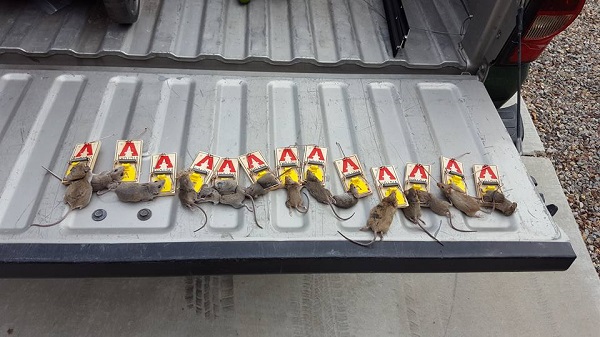Mice can enter your home through any opening as small as a dime. Once inside, they often make their way up to the attic, where they find
a haven for nesting. Because their teeth grow continuously, mice need to constantly chew on anything that is available to control their
length. This constant gnawing and their search for materials for nesting can cause structural damage throughout an attic.

In addition, many homeowners store items such as furniture, books, artwork, and holiday trimmings in attics. All of these are fair game for
destruction by mice. Mice like to chew holes in furniture cushions and create nests inside. Their urine and feces ruin upholstery. And they
will chew on wooden furniture parts to keep tooth growth in check.
Anything made of paper or canvas makes prime nesting materials when shredded by mice. Books, artwork, and cardboard boxes stored in an attic
can be chewed to bits and used to line nests.
Several types of structural damage in the attic can be attributed to mice. Their constant gnawing can destroy insulation, conduit, and wiring.
Mice have been known to chew into plastic pipes, causing water damage from sprinkler systems and leaks in drainage pipes. If they chew into an
active water line, the resulting leak can cause major damage.
Mice also like to chew on the insulation for wiring systems. Wire insulation consists of layers of paper tightly wrapped around the wire, covered by
an outer cover made of plastic. In addition to keeping their teeth trimmed, mice use the wire insulation for nesting materials. Damage by mice to wires
has been known to cause electrical shorts, power outages, and even house fires.
Mice urine and feces can cause several types of illnesses, making your attic a contaminated area. Diseases carried by mice include tularemia, leptospirosis,
Hantavirus, and salmonellosis. This contamination can make selling your house difficult.
Mice can also bring other unwelcome visitors inside with them. Fleas and ticks often accompany mice into a home, possibly spreading additional diseases.
It is important to know that many homeowners’ insurance policies specifically exclude damage caused by rodents. Homeowners are responsible for cleaning up any
damage caused by rodents.
Unpleasant odors are also associated with mouse infestations. These odors can come from mouse urine and droppings, and also from dead mice if they die within a
wall or an inaccessible area in the attic.
Mice may choose to make their nests inside of electrical units and ductwork, which can lead to system failures. They also like to chew through insulated ductwork
and make nests inside. This can block airflow causing problems with air conditioning systems. Mice in the attic can be a definite problem. If you have an infestation,
the best remedy is to hire a recommended professional to deal with the problem. The professional can seal you house against further mouse incursions; exterminate mice
already inside your house, and clean up the mess that mice leave behind.
Go back to the
How to get rid of mice in the attic home page. You might also want to read about
how to kill mice and why the use
of snap traps is better than
mouse poison. Read an analysis of the different types of traps and how to use them on the
how to trap mice page.
Learn why
bait is not as important as trap type, placement and location. Also read a full analysis of
mouse repellent to understand why it
never works. If you see droppings and want to identify them, read the
mouse poop page. If you need to hire professional help, read about
how much does mouse removal cost?
or you can read this site to learn how to do it yourself. Feel free to email me about Mice Infestations Can Create Heavy Damage in Attics